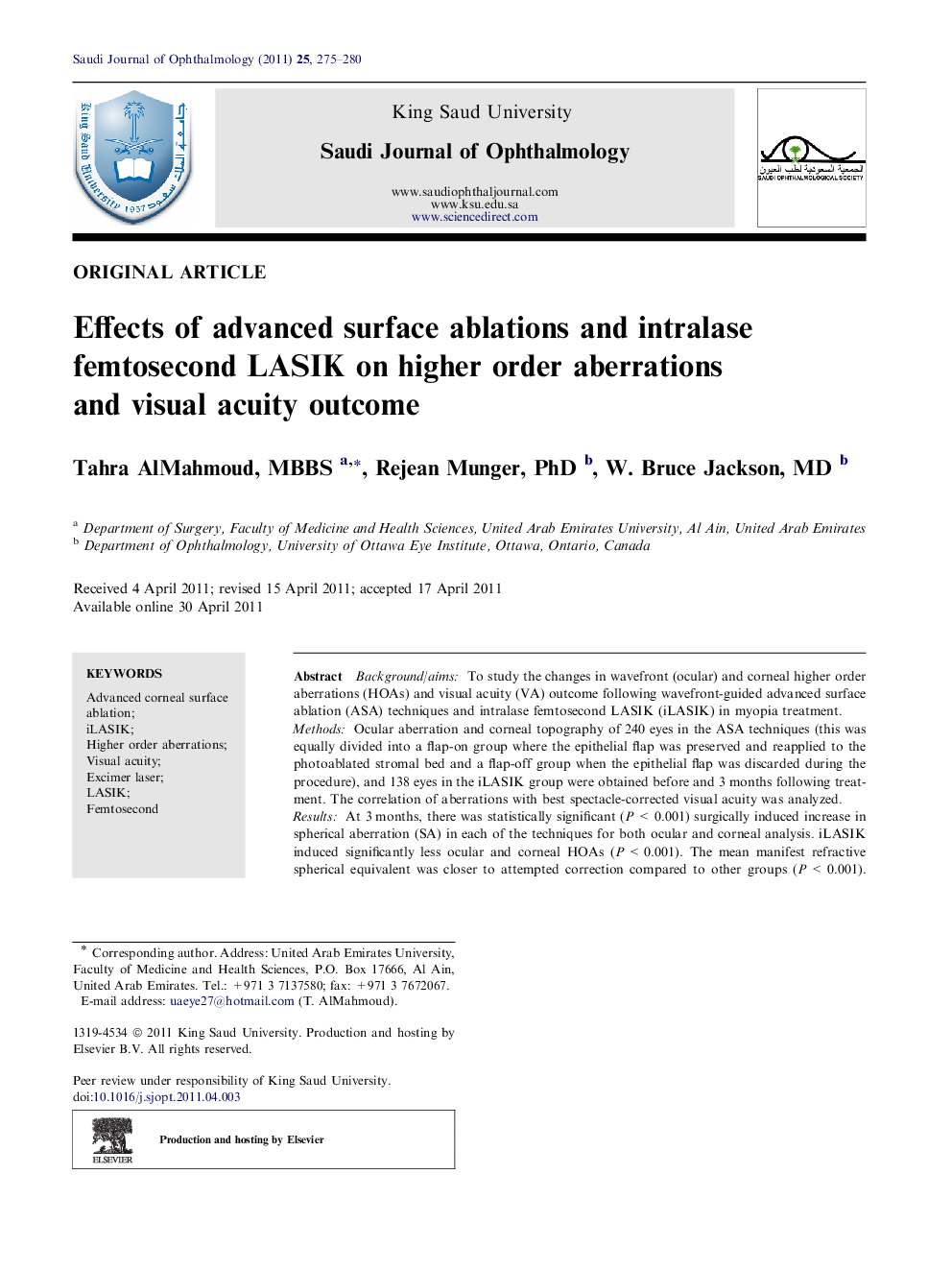| Article ID | Journal | Published Year | Pages | File Type |
|---|---|---|---|---|
| 2700823 | Saudi Journal of Ophthalmology | 2011 | 6 Pages |
Background/aimsTo study the changes in wavefront (ocular) and corneal higher order aberrations (HOAs) and visual acuity (VA) outcome following wavefront-guided advanced surface ablation (ASA) techniques and intralase femtosecond LASIK (iLASIK) in myopia treatment.MethodsOcular aberration and corneal topography of 240 eyes in the ASA techniques (this was equally divided into a flap-on group where the epithelial flap was preserved and reapplied to the photoablated stromal bed and a flap-off group when the epithelial flap was discarded during the procedure), and 138 eyes in the iLASIK group were obtained before and 3 months following treatment. The correlation of aberrations with best spectacle-corrected visual acuity was analyzed.ResultsAt 3 months, there was statistically significant (P < 0.001) surgically induced increase in spherical aberration (SA) in each of the techniques for both ocular and corneal analysis. iLASIK induced significantly less ocular and corneal HOAs (P < 0.001). The mean manifest refractive spherical equivalent was closer to attempted correction compared to other groups (P < 0.001). Eighty-three eyes (70%) of flap-on, 80 (67%) flap-off and 94 eyes (68%) in the iLASIK group achieved 20/20 uncorrected VA. Fifteen eyes (11%) accomplished 20/12.5 or better in iLASIK compared to 4 (3%) for flap-on and 7 (6%) for flap-off ASA group. Only the flap-off treatment showed a consistent correlation between the corrected aberrations and visual performance.ConclusionAt 3 months, all procedures resulted in a significant increase in HOAs and SA. All had comparable 20/20 VA and 11% of iLASIK patients achieved 20/12.5 or better level.
